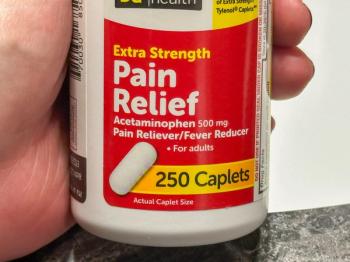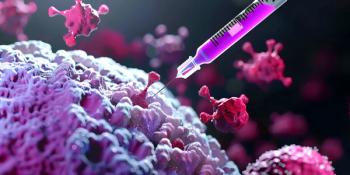
New HIV Test Combines Convenience, Reliability
Novel HIV test combines the convenience of the saliva test with the reliability of the blood test.
Reliable HIV testing is key to getting treatment for those at risk as soon as possible, but the options that public health officials can offer to patients are limited to either a blood test that is very reliable but has low participation levels or an unreliable saliva test that is more convenient.
However, that may no longer be the case.
Now, a team of chemists from Stanford University in Palo Alto, California, have developed a new test in collaboration with the Alameda County Public Health Laboratory that combines the convenience of the saliva test with the reliability of the blood test, by taking advantage of the behavior of HIV antibodies. According to
"The earlier you can detect, the better, because people can infect other people," Carolyn Bertozzi, PhD, the Anne T. and Robert M. Bass Professor in the School of Humanities and Sciences and a professor of chemistry at Stanford, said in a
The test involves taking a saliva sample and adding modified bits of HIV attached to a half piece of DNA. If the test is positive, the modified HIV latches onto the tagged HIV in the sample, creating a complete strain of DNA, which can be easily detected with typical lab techniques. The antibodies are 2-armed, and both arms easily latch onto the virus, allowing for a “purposefully low tech” test to be developed, Bertozzi said.
When examined in a small trial involving 44 patients (22 HIV-positive; 22 HIV-negative) who had their HIV status confirmed with other methods prior, the test correctly confirmed the presence of HIV in the 22 HIV-positive patients. More importantly, the new test did not result in any false-positives in the 22 HIV-negative patients.
"Our hope is that we can get an earlier read than the present oral test because the sensitivity is better," Bertozzi said. While unable to determine HIV status earlier than blood testing, it is suggested that the newly developed test—in a small sample—could be more sensitive than the available saliva tests.
Although preliminary, using 8 samples that returned with mixed results through standard saliva testing, the team’s test detected a positive diagnosis in 6 of the tests, 1 of which was confirmed via blood test.
The standard blood test also searches for HIV antibodies, which are usually abundant in the blood during the early stages of the infection. While reliable, the test utilizes needles, which can cause issues when health officials are trying to get a large number of patients treated.
"There's a lot of populations you just can't reach out to by blood tests," said Cheng-ting 'Jason' Tsai, the lead author of the paper and a graduate student in Bertozzi's lab, said in a statement. "But if you were to do oral fluid, then all of sudden you open up a brand-new population that was not otherwise accessible to you."
Additionally, oral tests have their own drawbacks. HIV antibodies do accumulate in the saliva, but not at the high levels or rate that they do in the blood. They are there, but they are few and far between. By the time the oral tests can reliably test HIV, “you’ve waited a long time,” Bertozzi said, leaving time for the infection to spread.
In addition to HIV, the same type of test is being investigated for its effectiveness in detecting typhoid and tuberculosis, as well as a way to determine the success of the measles vaccine.
The paper was
This article was originally published by
Newsletter
Stay informed on drug updates, treatment guidelines, and pharmacy practice trends—subscribe to Pharmacy Times for weekly clinical insights.














































































































































































































